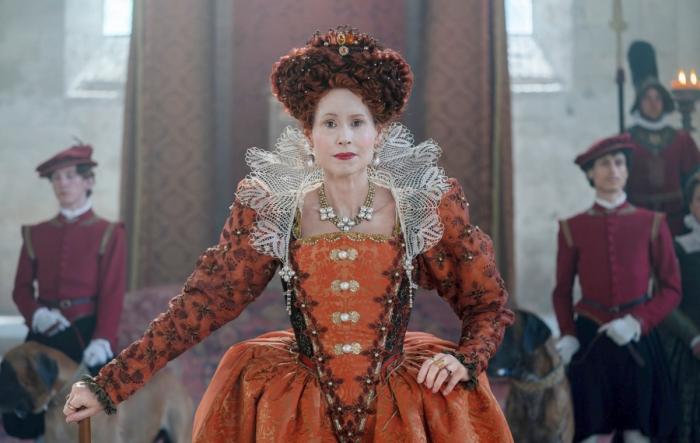The Serpent Queen slithers back onto our screens for a second season, bringing with it a potent cocktail of political maneuvering, religious turmoil, and a healthy dose of family drama. Catherine de Medici, our scheming protagonist, faces a new set of challenges: a burgeoning religious war, the trials of raising a brood of royal teenagers, and a potential alliance with France's arch-rival, England.
This season brings some notable changes. The show's framing device, where Catherine recounted her past to the servant Rahima, has been dropped. Rahima, while still present, no longer serves as a point-of-view character, leaving Catherine as our sole protagonist. This leaves Catherine's direct-to-camera soliloquies feeling a bit odd and redundant, as Samantha Morton's masterful acting often conveys her thoughts eloquently.
The time jump has brought about a recast for Rahima, now played by Emma McDonald as a young adult. Instead of being Catherine's pupil, Rahima has evolved into the Queen's spymaster, her network of agents weaving their way through the French court. Meanwhile, Catherine's children have grown into a delightfully petulant bunch of young royals, each defined by a single trait: Spineless, Swishy, Self-Righteous, Snickery, and Snobby.
While the underlying themes of Catherine's motherly authority, the simmering tension between Catholics and Protestants, and France's transition to secularity are captivating, they also carry a certain heaviness. The scenes involving the royal brood engaging in witty banter and trying on gowns offer a much-needed dose of lightheartedness.
The show's already permissive approach to anachronisms seems to have been relaxed even further, particularly in the dialogue. While I'm happy to be corrected, phrases like "wow" and "virtue signaling" seem to be out of place in the Valois court. The accents are also fairly loose, with most characters speaking with an Irish or British accent despite being French, with the sole French accent belonging to the eccentric Diane de Poitiers. This relaxed approach to historical accuracy lends a charmingly chintzy air to the show, inviting viewers to enjoy the story without taking it too seriously.
The color correction, however, veers into a somewhat strange territory. The show seems to have embraced a love for the colour blue, with every blue eye taking on an almost unnaturally intense shade that can be quite distracting.
But the show's biggest triumph this season is undoubtedly the arrival of Minnie Driver as Queen Elizabeth I. Driver delivers a phenomenal performance, embodying Elizabeth as a shrewd political predator who masks her sharp wit with a charming, seemingly ditzy facade. Her Elizabeth is a master manipulator, delighting in delivering backhanded compliments and cutting remarks. We see this in her meeting with Mary, Queen of Scots, where she feigning shock at Mary's prolonged imprisonment, and later, with the Queen of Navarre, where she claims to have no idea where Navarre is, playing up her supposed geographical ignorance. Driver's portrayal is a masterclass in portraying a cunning queen, her performance both electrifying and hilarious.
Elizabeth's arrival brings a potential trade agreement with France, but one that promises to be beneficial for her, and hurtful for Catherine. Elizabeth is keen to exacerbate the volatile situation between French Protestants and Catholics, hoping to force Catherine's hand and secure a favourable deal. The anticipation of their meeting is palpable, with Elizabeth's eyes lighting up at the mention of Catherine's power. Driver's performance is a perfect foil to Morton's more restrained portrayal, adding a much-needed spark to the show.
The Serpent Queen returns with a fascinating blend of historical drama, intrigue, and darkly comedic moments. While some changes might not resonate with all viewers, the addition of Minnie Driver's powerhouse performance as Queen Elizabeth breathes new life into the series, adding a layer of intrigue and humour that promises to elevate the already engaging story.
Article
Entertainment

The Serpent Queen Returns: Intrigue, Royalty, and a Dash of Minnie Driver

